Exploring The Evolution Of Diets Through History
DIETS
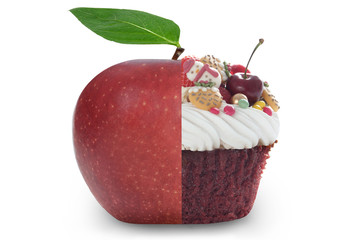
The Cabbage Soup Diet
There have been many fad diet trends throughout the years. In the 80’s, it was the cabbage soup diet, the liquid diet, liquid protein diet, and the grapefruit diet. I believe that it was established in the end, that each one of these diets resulted in a variation of the same theme…. STARVATION. I’m assuming these diets did not stand much of a chance since the general consensus on starvation was and is still not an overly popular one. Food intake is needed by the human body, and with this diet not much calorie intake or nutrition was provided to maintain a healthy body standpoint. These dieters were ready to move on.
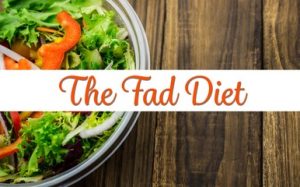
The Low Fat Diet
With the failed approaches used for dieting in the 80’s, the 90’s decided to take a completely different standpoint all together. The focus of the 90’s was of a low fat and nonfat food theme. Skim milk, low fat yogurt, low fat pudding, low fat muffins, low fat pastries, low fat cake… you name it… it came in a low fat version. Its primary focus was aimed at “healthy” alternatives to sweets while still giving people the ability to lose weight. Well, as we know, this diet would have also been equally unsuccessful, since sugar is the devil.

The Atkins Diet
In 2003, The Atkins diet was of all the rage. This new low-carb diet was all the craze! This involved never exceeding more than 20 grams of carbohydrates per day into your diet. The diet focused on limited carbohydrates to help the body to burn fat instead of sugar for fuel. In this diet, a lot of meat, eggs, fish, low carb vegetables, full-fat dairy products, healthy fats, and nuts and seeds were recommended. Sugars, whole grains, low fat foods, high carb vegetables or fruits, starchy foods, and things such as beans and lentils were avoided. Beverages were limited to water, green tea, and coffee. If you were a vegetarian, this limited you to a very plain diet of eggs, some vegetables, butter, nuts and seeds. Pretty boring, but it’s aim was to give you a pretty awesome physique.
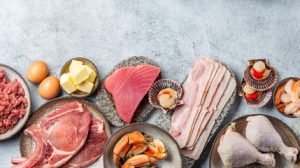 While some people were seeing results from the low-carbohydrate diet, introduced by Atkins, we began to recognize some long term consequences to this high fat, high protein diet. People began to have health complications. Some of these complications were as severe as heart arrhythmias, cardiac function impairment, sudden death, osteoporosis, kidney damage, high cholesterol, increased cancer risks, physical impairments, and lipid abnormalities. Also do to the limited intake of fruits and vegetables within this diet, people were lead to an increased risks of chronic bowel diseases. Another side effect that was noted was kidney stones. The diet culture began to become speculative.
While some people were seeing results from the low-carbohydrate diet, introduced by Atkins, we began to recognize some long term consequences to this high fat, high protein diet. People began to have health complications. Some of these complications were as severe as heart arrhythmias, cardiac function impairment, sudden death, osteoporosis, kidney damage, high cholesterol, increased cancer risks, physical impairments, and lipid abnormalities. Also do to the limited intake of fruits and vegetables within this diet, people were lead to an increased risks of chronic bowel diseases. Another side effect that was noted was kidney stones. The diet culture began to become speculative.
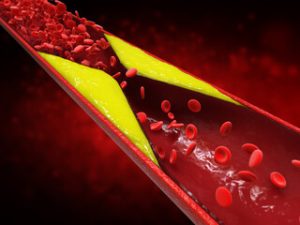
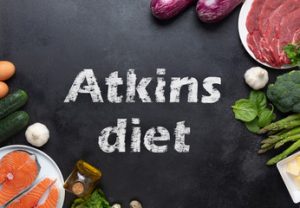
The Vinegar Diet
In and around the same time, Lord Byron’s vinegar diet was introduced. This diet was created by William Howard Hay. The diet consisted of consuming unpasteurized apple cider vinegar diluted in water 3 times a day before meals. The dieter could also add honey to the mixture to help with the taste. This fad diet quickly lost its popularity when people realized that the vinegar essentially did nothing more than give them really bad heartburn and indigestion.
The Paleo Diet
The Paleo Diet, that was created back in the 1970’s became popular again in and around 2014. This diet was an eating plan based on what human foods might have been consumed during the Paleolithic Era. (2.5 million to 10,000 years ago)….. A LOOONNNGGG time ago!!! People started to believe that our genes were not well adjusted for modern diets and that farming had made foods such as fruits and vegetables, meats, and milk more easily available to humans at a rate that had outpaced the body’s ability to adapt. This inability to adapt was believed to have been a key cause in obesity, diabetes, and heart disease in this day and age.
The Paleo diet promoted a very plant-based diet. Fruits, vegetables, nuts and seeds, eggs, lean meats, fish, olive oil or walnut oil in their diets were acceptable for this diet plan. Their diet avoided things such as grains, beans, lentils, peanuts, milk, cheese, sugars, salt, starchy vegetables, and highly processed foods. This diet did have some short term benefits, but some studies have shown that any potential benefits of the paleo diet may not have outweighed the benefits of other healthy diets available.
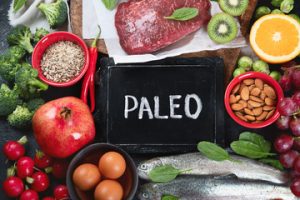
The Keto Diet
The Keto Diet is another one that has been around for quite some time. It has gained a lot of popularity over the past few years. It is the diet that requires that 90 percent of a person’s calories come from fat, 6 percent from protein, and 4 percent from carbohydrates each day. The purpose of this diet is to force the body into a state of ketosis.
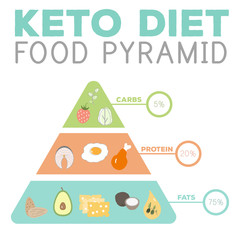 Ketosis is considered to be a metabolic state that will use fat for energy instead of carbohydrates. This can only occur if someone is eating less than 50 grams of carbohydrates per day for several consecutive days. This diet was actually created almost 100 years ago as a treatment for epilepsy and weight loss. The benefits of this diet have been proven, but once again… it does come with its risks. These risks can include: low blood pressure, kidney stones, constipation, nutrient deficiencies, increased risk of heart diseases, gallbladder diseases, cholesterol buildup, diabetes, Alzheimer’s disease, and cancers. Dietitian generally will not recommend this diet.
Ketosis is considered to be a metabolic state that will use fat for energy instead of carbohydrates. This can only occur if someone is eating less than 50 grams of carbohydrates per day for several consecutive days. This diet was actually created almost 100 years ago as a treatment for epilepsy and weight loss. The benefits of this diet have been proven, but once again… it does come with its risks. These risks can include: low blood pressure, kidney stones, constipation, nutrient deficiencies, increased risk of heart diseases, gallbladder diseases, cholesterol buildup, diabetes, Alzheimer’s disease, and cancers. Dietitian generally will not recommend this diet.

Intermittent Fasting Diet
The latest diet to be recognized by many is one that essentially has no food restrictions. In saying, “no restrictions,” I’m meaning any foods in MODERATION! It is called intermittent fasting. There are several ways you can approach this type of eating. You may choose to only eat one meal for a few days a week, while fasting the rest of the time on those days, and then return to a normal schedule. You may decide that eating one meal and one snack during an eight hour period throughout the day is your “eating period” and the rest of the day is your “fasting period.” Cheat days are also allowed.
Intermittent fasting works by prolonging the period of time when your body has burned through the calories it had consumed from your last meal and thus begins to burn fat instead. If you are eating three meals a day, plus snacks in between, your body is continually burning the consumed calories you are continually eating. Your body never does get a chance to start burning any fat.
 You can repeat this intermittent fasting process as much as you’d like. However, you do not want it to go so far as to have it causing you to feel unwell. Skipping meals can be known to cause headaches, dizziness, and nausea. We must be aware of sign and symptoms during our times of fasting. Nevertheless, many studies have shown great success in people trying to loose weight and body fat with this method. On average it has shown an expected decrease of 4 to 13 ponds a month in weight, inches lost around the waist, an increase in overall energy, and brain function if approached correctly.
You can repeat this intermittent fasting process as much as you’d like. However, you do not want it to go so far as to have it causing you to feel unwell. Skipping meals can be known to cause headaches, dizziness, and nausea. We must be aware of sign and symptoms during our times of fasting. Nevertheless, many studies have shown great success in people trying to loose weight and body fat with this method. On average it has shown an expected decrease of 4 to 13 ponds a month in weight, inches lost around the waist, an increase in overall energy, and brain function if approached correctly.
 To improve your overall metabolic health, it is highly suggested that your fasting period be ideally 12 hours or longer in between meals on a regular basis. Most often people choose to fast anywhere between 14-18 hours between meals. This would be considered the ideal range.
To improve your overall metabolic health, it is highly suggested that your fasting period be ideally 12 hours or longer in between meals on a regular basis. Most often people choose to fast anywhere between 14-18 hours between meals. This would be considered the ideal range.
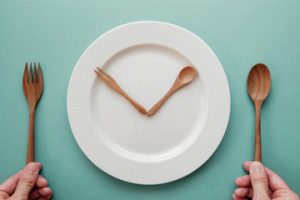
The Fad Diets in History
The first diet books
The first diet book came out in 1558, and was written by Luigi Cornaro. It is called The Art of Living Long and is still in print today. The advice he gives in his book is to limit themselves to 12oz of food per day, and 14oz of wine.
The the 1600’s The Fruits, Herbs, and vegetables of Italy cook book heavy criticized the sugar and meat diet of Britain. This book became the source of material for today’s Mediterranean Diet.
In the early 1900s, one of the weirdest diets that took America and England by surprise was “Fletcherism.” This diet consisted of chewing every mouthful of food 32 times (or until it became a liquid) and then spat out the rest. That must have taken some self-control!
What is the best way to go about choosing a diet for yourself?
Choosing a diet for yourself can be a daunting task, as there are so many different options available. The best way to go about it is to start by considering your individual needs and goals. Think about what you want to achieve with a new diet — do you want to lose weight, gain muscle, or simply feel healthier? Once you have determined your goals, you can begin researching different diets to find one that fits with your lifestyle and nutritional requirements. Consider factors such as the types of foods included, the amount of time and effort required for meal prep, and any restrictions or limitations on certain food groups or ingredients. You may also want to talk to your doctor or a nutritionist before making any drastic changes to your diet. With the right research and guidance, choosing the right diet for yourself can be an empowering experience that sets you up for long-term success.
What is the difference between healthy eating and a diet?
The main difference between healthy eating and a diet is that healthy eating is an overall lifestyle focused on making nutritious food choices over the long-term, while a diet is typically used to achieve a specific weight loss or health goal in a shorter amount of time. Healthy eating involves making conscious decisions about the types and amounts of food you consume, as well as how often you eat, while diets often involve more restrictive eating plans with specific foods and meal sizes. Additionally, healthy eating is not necessarily focused on losing weight or improving physical health, but rather involves making balanced dietary choices that support your overall wellbeing. On the other hand, diets are typically focused on reaching a certain weight or improving certain physical health markers. Ultimately, both healthy eating and diets can be beneficial for achieving different goals, depending on individual needs and preferences.
What was the first human diet?
The first human diet is thought to have been largely plant-based, consisting of fruits, vegetables, nuts and seeds. The earliest humans also hunted wild animals for meat and gathered a variety of shellfish and insects for protein. This paleo-style diet was rich in vitamins, minerals, fiber and other essential nutrients that were necessary for survival. Over time, humans began to cultivate crops like wheat, barley and rice, which allowed them to expand their diets beyond what they could gather from the environment. As agriculture developed, people began to eat more domesticated animals such as cows, pigs and chickens. This shift in dietary habits marked the beginning of the modern human diet.
Where did the 3 day diet come from?
The 3 Day Diet, also known as the Military Diet, is a restrictive diet plan that originated in the 1980s. It is believed to have been developed by nutritionists at the US Department of Defense, who were hoping to help military personnel lose weight quickly in order to meet their physical fitness requirements. The 3 Day Diet consists of a strict meal plan that includes only certain foods and beverages for three consecutive days. After the three days are up, the dieter is encouraged to return to a normal, healthy eating routine. While this diet may be effective for some people in helping them reach their weight-loss goals, it should not be used as a long-term solution as there is no scientific evidence to support its effectiveness or safety.
Before Dieting …Always Remember…
If you are someone with medical problems, you should always contact your physician before attempting any new diet or fasting regimen. It is not recommended for everyone.
Disclosure Statement: As an Amazon Associate, hearwegogo.com does earn from qualifying purchases.
Here are some products that I recommend when dieting:
For a sorts of calorie counters: Click here
Book, Life in the Fast Lane: How to Make Intermittent Fasting a Lifestyle-and Reap the Benefits of weight loss and better health By Jason Fung, Eve Mayer, and Megan Ramos: Click here
Smart Watch Fitness Tracker for Men and Women: Click here
To buy the book The Art of Living Long by Luigi Cornaro: Click here


